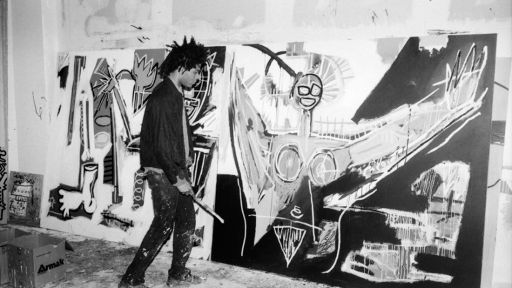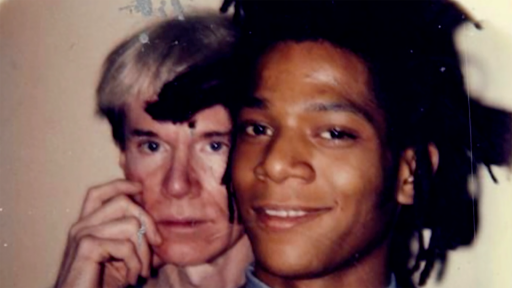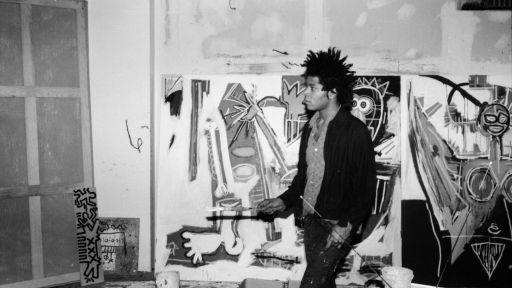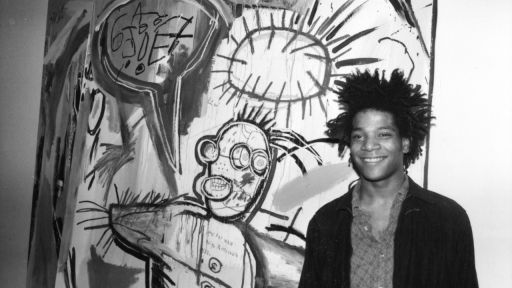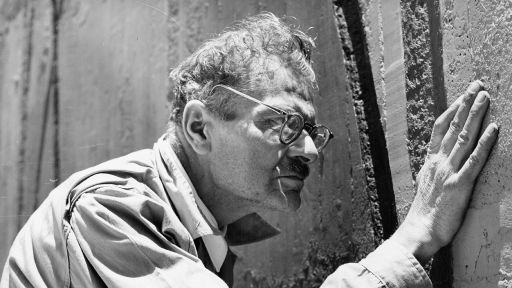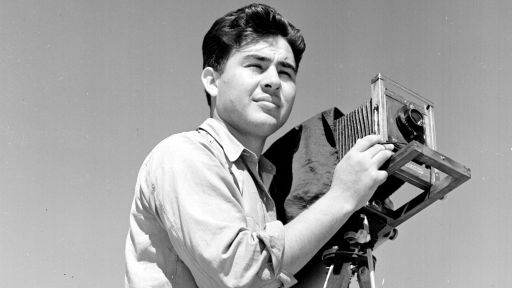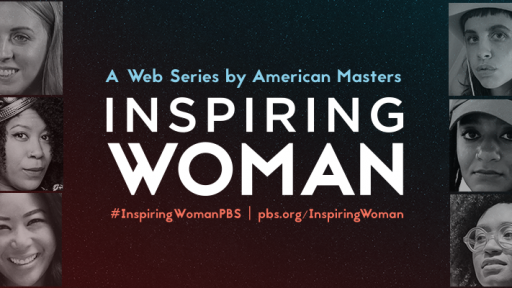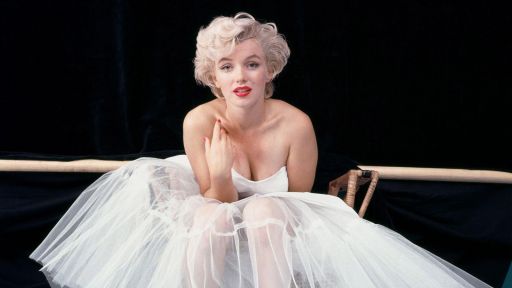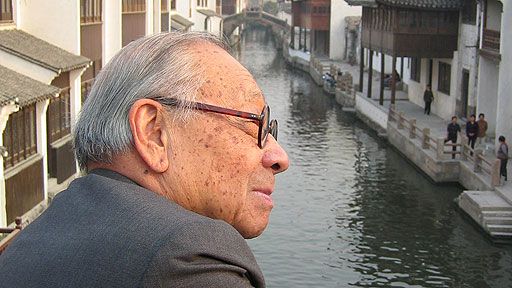The Brooklyn-born artist Jean-Michel Basquiat remains one the most enigmatic and beloved figures of the ’70s and ’80s.
Basquiat, who was of Haitian and Puerto Rican descent, died of an accidental drug overdose in 1988 at just 27 years old, but not before creating a collection of some 600 paintings and 1,500 drawings that still excite and inspire the public imagination and young artists to this day. Here are facts about his life as told in the documentary Basquiat: Rage to Riches.
1. His earliest, most vivid memory was getting hit by a car.
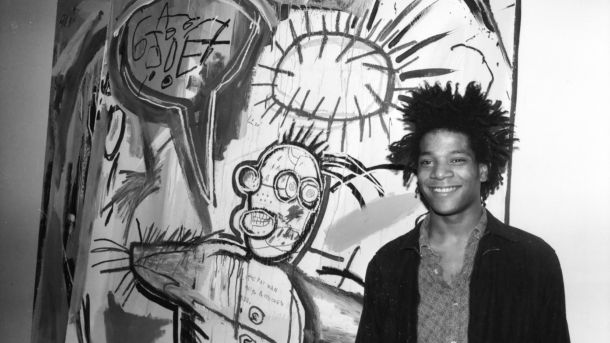 Basquiat was just 7 or 8 years old when he was struck by a car while playing stickball in the street with friends outside his home in the Brooklyn neighborhood of Flatbush. Basquiat’s sister, Lisane, remembered that her brother was in the hospital for quite a long time, and had to have his spleen removed after the accident.
Basquiat was just 7 or 8 years old when he was struck by a car while playing stickball in the street with friends outside his home in the Brooklyn neighborhood of Flatbush. Basquiat’s sister, Lisane, remembered that her brother was in the hospital for quite a long time, and had to have his spleen removed after the accident.
“One of the gifts that my mother brought to him was the book, ‘Gray’s Anatomy.’ She wanted him to have the opportunity to see his own body, as it related to the way it had to be reconstructed,” Lisane Basquiat said.
That book would influence Basquiat for the rest of his life. Years later, as a budding young artist in his early 20s in New York City’s Lower East Side, Basquiat formed a band that he named “Gray.” Images of various body parts and anatomical drawings also started making their way onto his canvases alongside select words and poetry.
“Those images seen from ‘Gray’s Anatomy’ crop up all around his work. It’s kind of his Rosetta Stone of imagery,” said Basquiat’s friend and fellow artist Jennifer Vonholstein.
2. Before he was known as Jean-Michel, he was “SAMO.”
In the ’70s, New York — and the streets and subways of Brooklyn and the Bronx in particular — was covered with graffiti. A new generation of young artists were inspired by the renegade art form, and it was around this time that the tag “SAMO” began to appear on buildings, often accompanied by spray painted epigrams; brief, philosophical musings, or even multiple choice questionnaires. SAMO had a Banksy-like enigma in New York at the time. “There was a lot of conversation downtown. Who is SAMO? People claim to have seen SAMO,” said the art dealer Jeffrey Deitch.
It turns out SAMO was the brainchild of Basquiat and fellow artist Al Diaz, who attended high school together in 1976. They created an “ideal religion” they named SAMO, and set about spray painting its tenets across the city.
“SAMO was part of the slang back then where you would hear an elderly Black guy talking to each other and say, ‘Hey what’s up?’ And that the other guy would answer, ‘Samo, Samo.’ As in other words, the same old s*** or the same old thing, whatever, and that’s really where we borrowed that from,” said Diaz.
But hungry for recognition, Basquiat took the mantle on for himself and began to embody the title. At an art party in Soho in 1979, Basquiat declared that he was SAMO, much to the excitement of everyone in attendance. The same week, he appeared on the Glen O’Brien show as SAMO and it was cemented. And as quickly as the enigmatic figure appeared, he evaporated. At some point, Basquiat had had enough of his alter-ego and declared “SAMO is dead” in graffiti that popped up around the city.
“That was the point where Jean-Michel began to assert himself as the artist Jean-Michel Basquiat,” said Deitch.
3. The first painting he sold was to Debbie Harry.
Before Basquiat made it big, he lived with a friend, Suzanne Malouk, who paid for both of their rent and expenses. Basquiat often couldn’t even afford painting supplies, so he would sometimes bring home doors from houses and apartments that had burned down and paint on those instead. Malouk remembered asking him on occasions to pull his weight and contribute to the household, to which he simply replied that one day he’d support them both when he became rich and famous. It was around this time that Basquiat sold his very first painting — to Debbie Harry from the band Blondie.
Basquiat met the rock star through fellow artist and hip-hop pioneer Fab 5 Freddy. Freddy was set to appear in the music video for Blondie’s song, “Rapture,” in which he’s mentioned in the lyrics: “Fab Fly Freddy told me everybody’s fly/DJ spinnin’ I said ‘My My’/Flash is fast/Flash is cool.”
“I had wanted Grandmaster Flash to be in the video for the part when she starts rapping,” Freddy said, but, “Flash didn’t believe I really knew them at the time, so he never showed up. So Jean-Michel was there, I was like, ‘Yo, put Jean-Michel on the turntables.'”
And just like that, Basquiat had a guest appearance in the Rapture music video. Somehow in this brief appearance, he also managed to sell his first painting to Harry for $200.
“That was a lot of money to us at that point,” said Malouk, “so we went out to dinner in a Chinese restaurant on Second Avenue — just an ordinary restaurant — but this was a real treat for us because we were so poor. It was very special and he was so happy and so proud.”
4. He dealt with pervasive racism throughout his career.
Even after Basquiat took New York by storm and became known and revered in the art world, racism persistently dogged him. At just 21, he was selling his work and already on his way to becoming a millionaire. And yet taxis still wouldn’t stop for him, so he took limousines everywhere he went, Mallouk recalled.
“There was a lot of resentment there was a lot of envy and it had definitely a racist edge to it,” recalled art dealer Larry Gagosian. “I remember there was an artist I was friendly with and he had gone for a dinner party at a collector’s house and I said, ‘Well what is their collection like?’ He says ‘They have a really great collection Larry, […] the thing that fucks it up is they have got a Basquiat’.”
Friend and artist Brett De Palma remembered another incident where prospective buyers came to Basquiat’s studio and brought him a bucket of Kentucky Fried Chicken. He was so insulted by the gesture that he told them to “get out” immediately and said he wouldn’t sell anything to them.
“As they left, he was on the second floor, he took this bucket and went over and dumped on the heads of these people leaving his studio,” De Palma recalled.
Throughout his career, Basquiat resisted being known as a Black artist, he simply wanted to be known as a great artist, said his sister Lisane. But he was “also incredibly connected to the Black experience and to his Blackness because he was a Black man,” she said.
5. His friendship with Andy Warhol was great, until it wasn’t…
As a young artist in NYC, Basquiat looked up to the established artist Andy Warhol. The first time Basquiat met his idol, he spotted him through the window of a restaurant and rushed in to try and sell Warhol some postcards that he had just printed. Warhol bought two. The second time they would meet would also be at a restaurant. This time, Basquiat was already becoming an artist of renown. The two took some Polaroids together at the restaurant, which inspired Basquiat so much, he skipped lunch and rushed off to paint a portrait based on the polaroid in his studio. Basquiat returned with the 5-foot square painting, which was still wet, and put it on the floor.
“Andy was like ‘Oh God, you are so fast,’ and ‘This is so great,’ and ‘I didn’t even send the Polaroids out to the lab yet,'” said the writer Bob Colacello who witnessed the scene that day.
After that, Warhol took Basquiat under his wing. Some believe it was the older artist’s influence that kept Basquiat off drugs for a long time. But it was also a relationship that was tinged with a certain level of envy on Warhol’s part, observers noted.
“I think that Andy Warhol was a great influence on Jean-Michel. He didn’t do drugs, he kind of took Jean-Michel around in the international art world and showed him some of the ropes,” said the photographer Paige Powell, who dated Basquiat at the time. While Warhol was “paternal,” there was also “jealousy and rivalry going on all the time,” said Powell.
The two artists did a collaborative show together in 1985, but the relationship ended abruptly after an unfavorable New York Times review that called Basquiat Warhol’s “mascot.”
“[Basquiat] really, really took it very hard and he expressed that he would never talk to Andy again. That was it, he was done with Andy,” said the artist Michael Halsband.
“I think Jean became very paranoid and suspicious of even Andy, and felt that, you know, Andy had this reputation of being a vampire and feeding off of younger artists, and needing new blood to infuse his own career,” said De Palma.
Basquiat cut Warhol off after that incident, refusing to answer his calls in an effort to forge his own path. But without Warhol, Basquiat once again started using drugs and became more reclusive. After Warhol’s sudden death from cardiac arrhythmia in 1987, Basquiat was overcome with grief and guilt, and returned to even heavier drug use.


